Recombinant Human Collagen Type III
| Cat.No. : | Collagen-2330H |
| Product Overview : | Recombinant human collagen is a genetically engineered strain constructed by molecular biology method. The collagen type III was purified by more than a dozen separation process. The product is sterilized under GMP conditions and lyophilized to obtain active product. |
| Availability | October 29, 2025 |
| Unit | |
| Price | |
| Qty |
- Specification
- Gene Information
- Related Products
- Case Study
- Application
- Download
| Species : | Human |
| Source : | P.pastoris |
| Tag : | Non |
| Form : | Lyophilized White Powder |
| Molecular Mass : | Theoretical molecular weight 55.0kDa. |
| Endotoxin : | <0.5EU/mg |
| Purity : | >95.0% (HPLC) |
| Storage : | Remain closed and stored at 4 centigrade for lyophilized powder. For solutions, store at -20 centigrade and avoid freeze/thaw cycles. |
| Reconstitution : | Reconstitute in ddH2O or buffer solution to prepare a stock solution. Aliquot and store at -20 centigrade. |
| ◆ Recombinant Proteins | ||
| Collagen-2330H | Recombinant Human Collagen Type III | +Inquiry |
| ◆ Native Proteins | ||
| Collagen-316B | Native Bovine Collagen Type II | +Inquiry |
| Collagen-62B | Native Bovine Collagen Type XI | +Inquiry |
| Collagen-55B | Native Bovine Collagen Type II | +Inquiry |
| Collagen Type I-03R | Native Rat Collagen Type I (Atelocollagen) Protein | +Inquiry |
| Collagen-49B | Native Bovine Collagen Type XI/XI | +Inquiry |
Case 1: Wang C, et al. Matrix Biol. 2020
This study explored the lesser-known role of type III collagen in maintaining and repairing skeletal tissues, focusing on its function in knee joint tissues: articular cartilage and meniscus. Using a range of techniques, including nanomechanical testing and histology, the research assessed the effects of reduced type III collagen in Col3a1+/- mice. Findings indicate that a decrease in type III collagen results in fibril diameter heterogeneity, increased mean thickness, and a lower tissue modulus, with more pronounced effects as the skeleton matures.
The study suggests that type III collagen is vital for fibril assembly and biomechanical function in both tissues during post-natal growth. In articular cartilage, it significantly influences the micromechanics of the pericellular matrix, potentially affecting early type II collagen fibrillogenesis and chondrocyte mechanotransduction. Despite increased collagen cross-linking, the reduction of type III collagen decreases tissue modulus, implying that structural disruption from its deficiency has a greater impact than the stiffening effect of additional cross-linking.
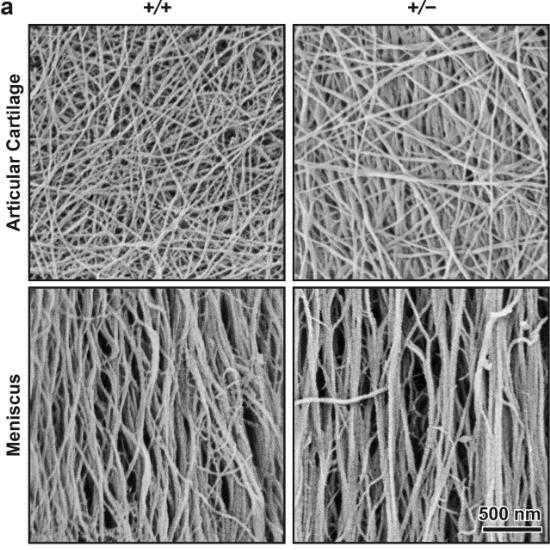
Fig1. Representative SEM images of collagen fibril structure on the surfaces of 2-month-old wild-type (+/+) and Col3a1+/− (+/−) cartilage and meniscus.
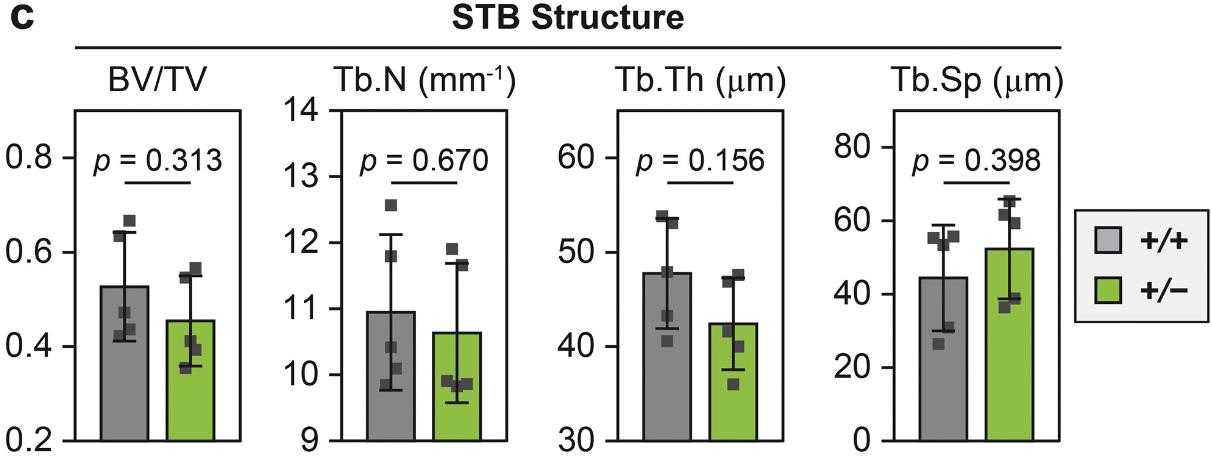
Fig2. Subchondral trabecular bone (STB) structural characteristics.
Case 2: Liu X, et al. Int J Biol Macromol. 2023
Breast cancer is the most prevalent cancer globally, yet it lacks effective and safe treatments. This study investigates the potential of a new biomaterial, recombinant humanized collagen type III (rhCOLIII), in treating breast cancer. Researchers discovered that rhCOLIII can inhibit the growth, migration, and invasiveness of breast cancer cells without affecting normal breast cells. It also induces apoptosis and dormancy in cancer cells and curbs autophagy.
RNA sequencing analysis pointed to DDR1 as a likely target for rhCOLIII's antitumor action.Blocking DDR1 negates rhCOLIII's impact on cancer cell behavior. Furthermore, rhCOLIII treatment reduced tumor activity in animal models, increased DDR1 protein levels, and suppressed autophagy in tissues. This research highlights rhCOLIII as a promising candidate for breast cancer therapy.
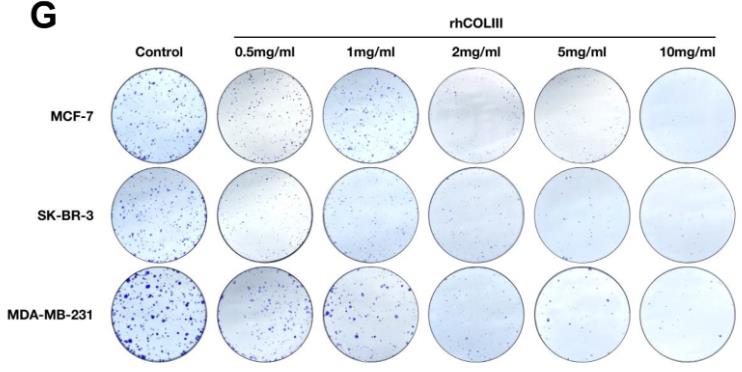
Fig1. The numbers of clones formed by BCCs after treatment with different concentrations of rhCOLIII.
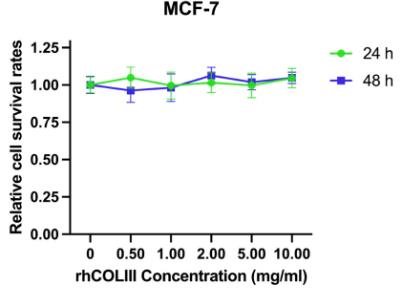
Fig2. The survival rates of BCCs under rhCOLIII treatment were measured using a CCK-8 assay after blocking DDR1.
Human Collagen Type III is an important protein widely found in various tissues of the human body, especially skin, blood vessels, muscles and internal organs. It plays a key role in the skin's elasticity and repair process, helping to maintain the skin's healthy and youthful state. In addition, type III collagen plays an important role in biological processes such as wound healing, tissue repair and remodeling.
In the field of medical research and therapy, human type III collagen is widely used, especially in wound healing, matrix regeneration and orthopedics. rhCol III is used in 3D printing technology to create bioactive scaffolds that are able to mimic the structure and function of natural extracellular matrix and promote tissue regeneration. In the field of skin regeneration, rhCol III has been extensively studied to promote wound healing. It is used to prepare collagen hydrogels as a covering for skin grafts or as a wound dressing to accelerate re-epithelialization. rhCol III, when used in combination with stem cells, has the potential to promote bone and cartilage regeneration. In animal models, significant new bone and cartilage formation was observed with the implanted collagen/stem cell construct.
In addition, cell-grown collagen tubular scaffolds have been shown to be able to reshape into vascular grafts. Collagen implants are also being investigated to repair damaged heart muscle and corneas. In the cosmetics industry, collagen is widely studied and used for its moisturizing and nourishing properties for the skin.
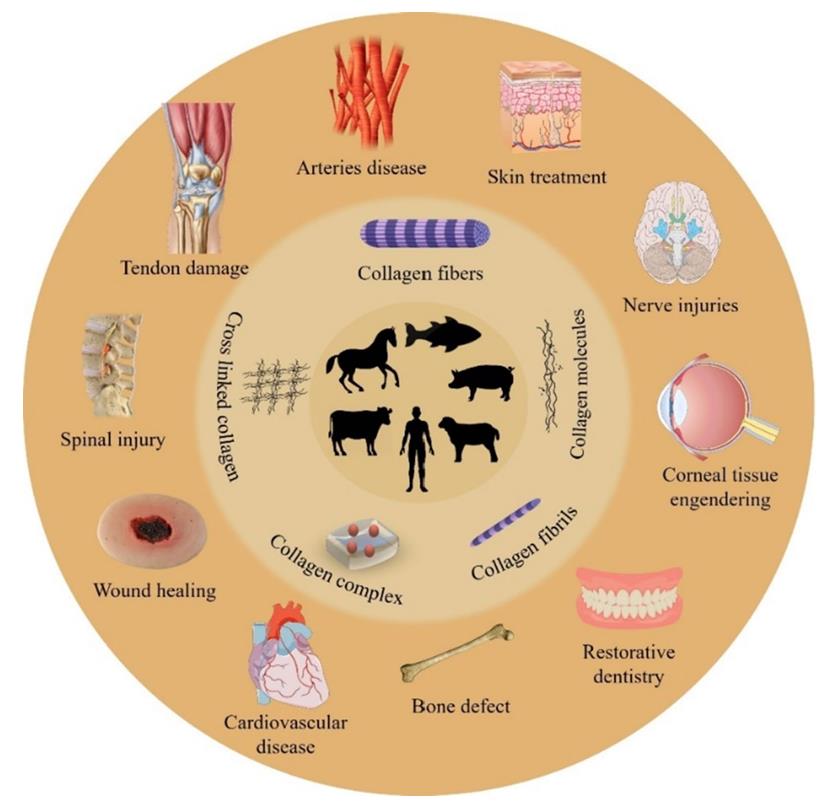
Fig1. Collagen is compatible with living tissues and has many different chemical properties. (Mehdi Abedi, 2023)
Not For Human Consumption!
Inquiry
- Reviews (0)
- Q&As (0)
Ask a Question for All Collagen Products
Required fields are marked with *
My Review for All Collagen Products
Required fields are marked with *



